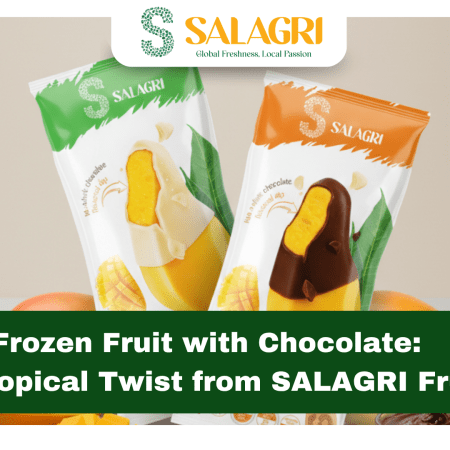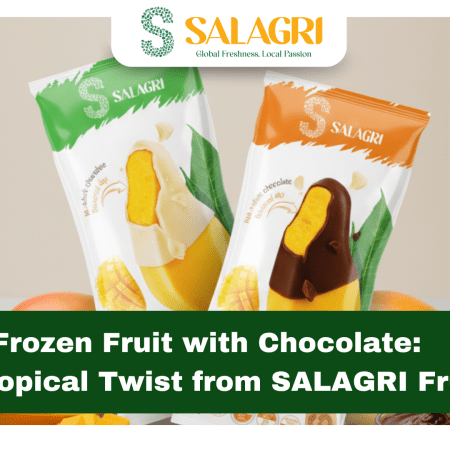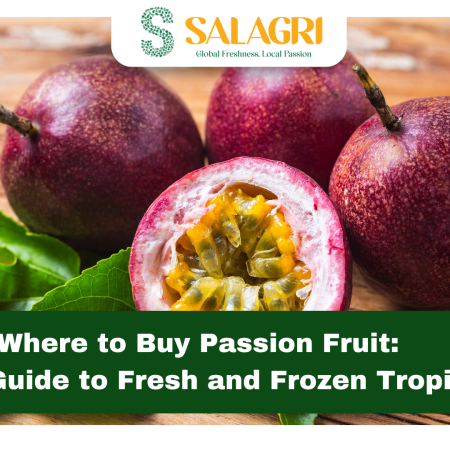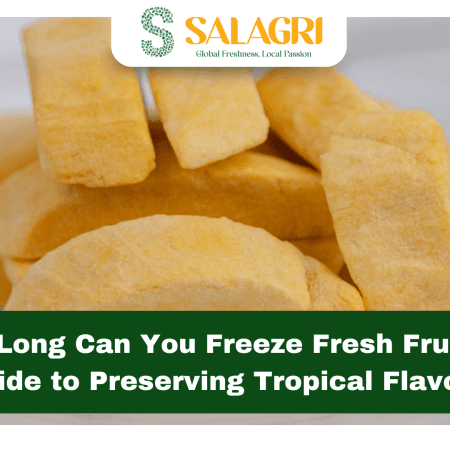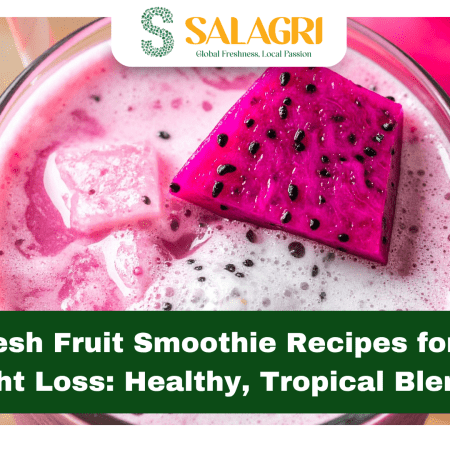
Living with diabetes doesn’t mean you have to miss out on the vibrant flavors of fresh fruit. The question “is fresh fruit good for diabetics” has a clear answer: yes, when chosen carefully. Fruits offer fiber, vitamins, and antioxidants that help manage blood sugar and support overall health. As someone who’s helped a diabetic family member enjoy fruit without worry, I’ve learned that tropical options like mangoes and dragon fruit can be both delicious and diabetes-friendly when portioned right. In this guide, we’ll explore “what fresh fruit is good for diabetics,” focusing on low-glycemic index (GI) tropical fruits, the benefits of frozen fruit, and why SALAGRI Fruit, the world’s leading provider of frozen tropical fruits and vegetables, is a top choice. We’ll also highlight why buying frozen fruit online from Vietnam—famous for its tropical bounty—is a smart move, complete with diabetic-friendly smoothie recipes. This article blends practical advice with a commercial nod to SALAGRI’s expertise, all from my personal perspective of making healthy eating enjoyable.
Is Fresh Fruit Good for Diabetics? The Basics
Fresh fruit is absolutely a great choice for diabetics when selected with care. The American Diabetes Association (ADA) encourages fruit as part of a balanced diet, noting that its fiber slows sugar absorption, preventing blood sugar spikes. A 2025 study in Diabetes Care found that low-GI fruit consumption can lower HbA1c levels by up to 0.5% in type 2 diabetics, thanks to fiber and nutrients like potassium, which supports blood pressure control—a key concern for diabetics. Fruits are low in fat and high in water, making them filling without piling on calories.
The key is moderation. Fruits contain fructose, a natural sugar that counts toward your daily carb limit (typically 45–60g per meal, per ADA). Stick to 1–2 servings daily, such as half a mango or a small orange, and pair with protein (like Greek yogurt) or healthy fats (like nuts) to stabilize blood sugar further. The ADA’s plate method—half non-starchy veggies, a quarter protein, a quarter carbs like fruit—keeps portions in check. Tropical fruits, abundant in Vietnam, offer low-GI options that fit perfectly into diabetic meal plans.
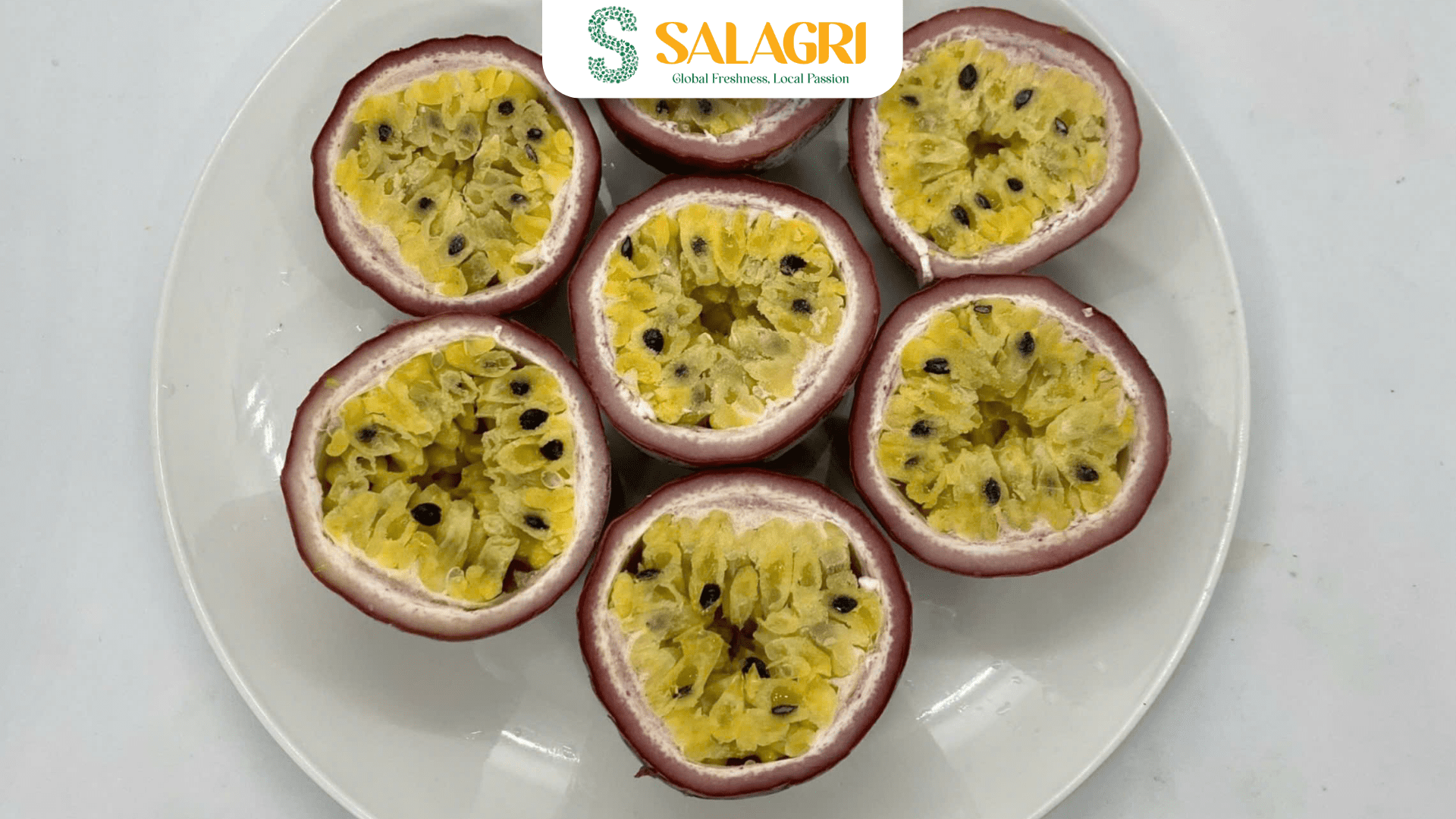
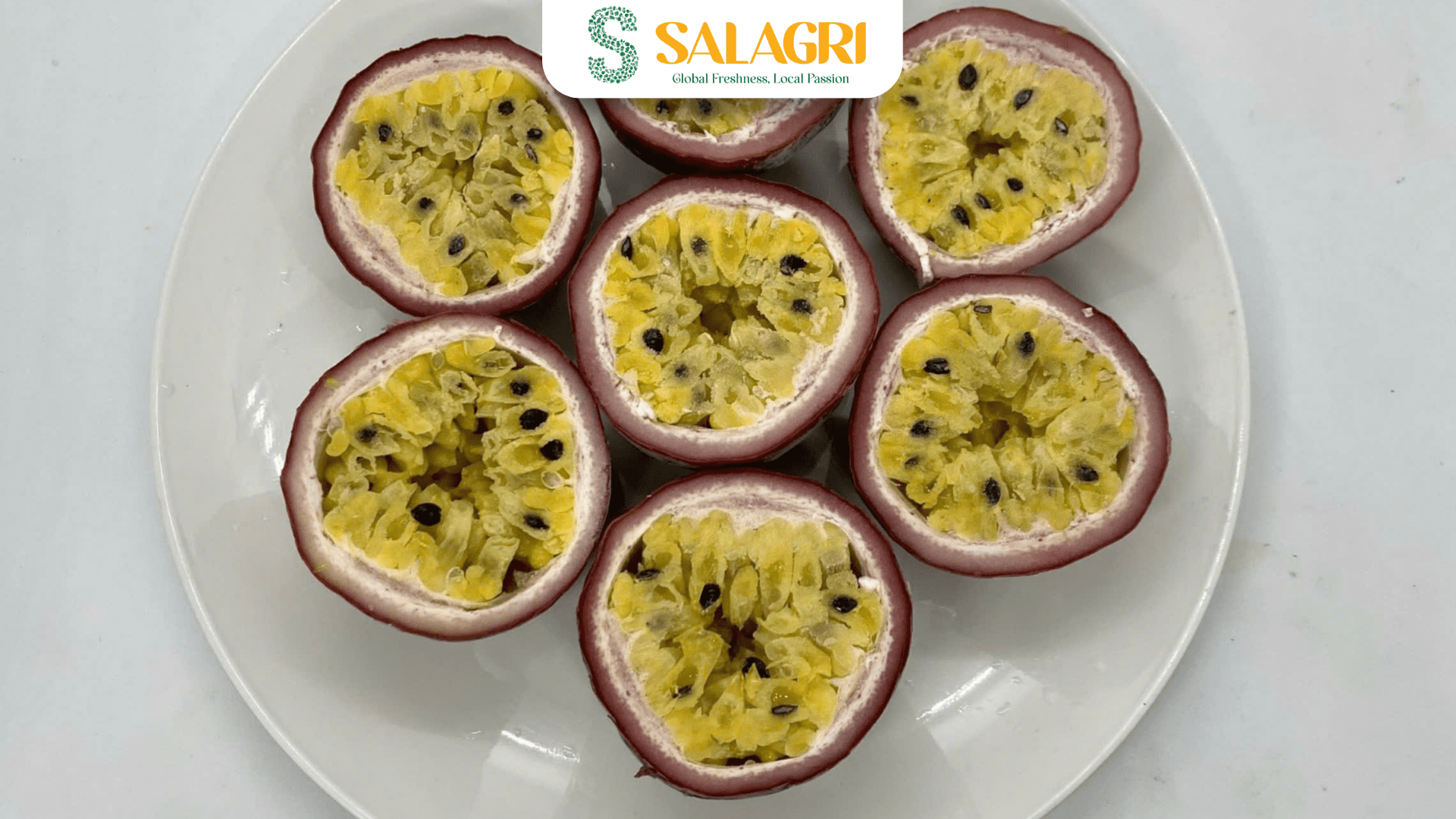
Understanding Glycemic Index for Diabetics
The glycemic index (GI) measures how quickly a food raises blood sugar, with low-GI foods (under 55) being ideal for diabetics. Fiber-rich fruits generally have lower GI, slowing digestion and minimizing spikes. For example, dragon fruit has a GI of around 48–52, while watermelon is higher at 72 (use small portions). A 2025 ADA report suggests GI is a helpful guide, though portion size and meal pairing are equally important. Pairing medium-GI fruits with low-GI foods like almonds can reduce the overall impact.
Whole fruits are better than juices, which remove fiber and concentrate sugars. Dried fruits, like dried mango, are carb-dense, so use sparingly. Monitor your blood sugar after eating to personalize your choices.
What Fresh Fruit Is Good for Diabetics? Top Tropical Picks
When asking “what fresh fruit is good for diabetics,” focus on low-GI, fiber-rich tropical fruits, especially those from SALAGRI Fruit’s range. Here’s a list tailored for diabetics, based on 2025 ADA guidelines and nutritional data, emphasizing Vietnam’s tropical offerings:
- Dragon Fruit – GI: 48–52
Low-carb (13g per cup, 60 calories) and high in fiber, dragon fruit stabilizes blood sugar. Its antioxidants, like betalains, reduce inflammation, a diabetes risk factor. - Mango – GI: 51
A half-cup serving (54 calories, 13g carbs) offers fiber and vitamin C. Pair with yogurt to lower GI impact. - Citrus Fruits (Oranges, Pomelos) – GI: 25–43
High in fiber and vitamin C, a small orange (62 calories, 15g carbs) supports immunity. Pomelos, popular in Vietnam, are similar but slightly lower in carbs. - Guava – GI: 33
Packed with fiber (3g per fruit, 37 calories, 8g carbs), guava aids digestion and blood sugar control. - Avocado – GI: <15
Low-carb (2g net per half, 160 calories) with healthy fats for satiety and heart health, a must for diabetics. - Pineapple – GI: 59
Use sparingly (½ cup, 41 calories, 11g carbs) for its digestive enzymes and vitamin C. Pair with protein to blunt GI. - Papaya – GI: 60
A half-cup (55 calories, 14g carbs) provides fiber and vitamin A. Keep portions small due to medium GI. - Passion Fruit – GI: 30
Low-carb (7g per fruit, 17 calories) with fiber to slow sugar absorption, ideal for diabetic snacks.
These tropical fruits fit within the ADA’s 15–30g carb per serving guideline. Always test your blood sugar post-meal to ensure compatibility.
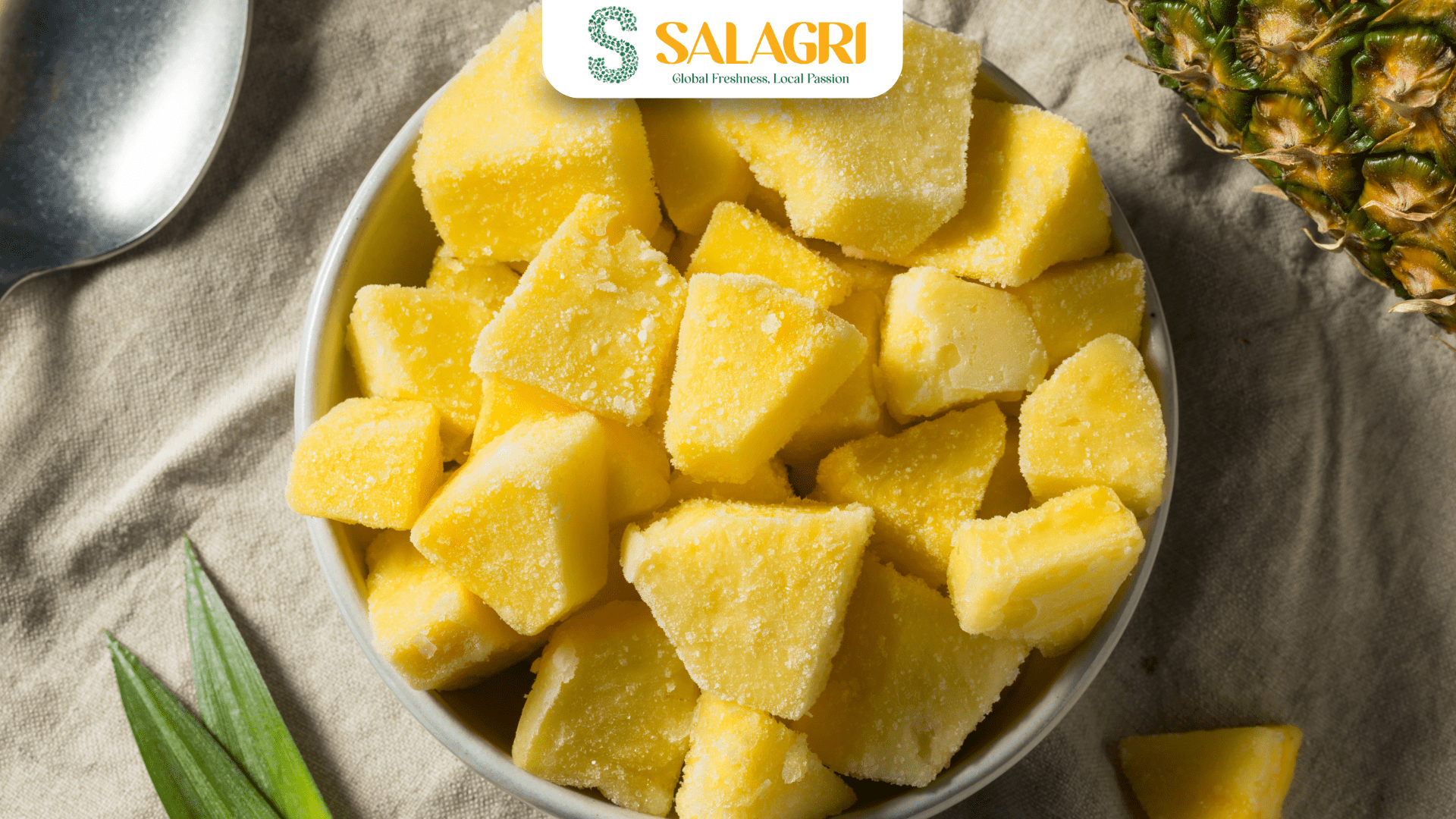
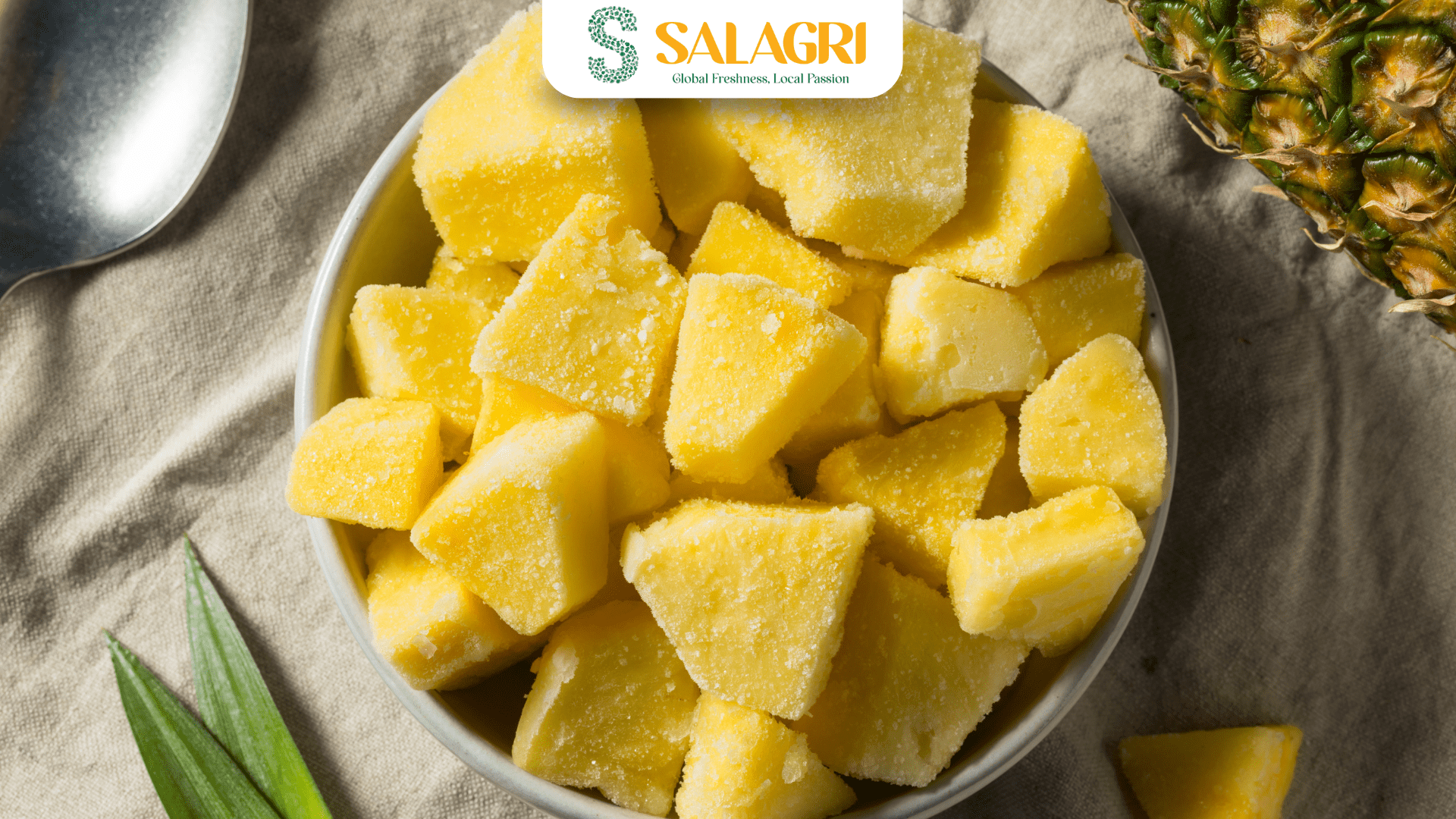
Benefits of Frozen Fruit for Diabetics
Frozen fruit is a fantastic option for diabetics, matching fresh in nutrition with added convenience. A 2025 study from the American Frozen Food Institute found that IQF (Individually Quick Frozen) fruit retains up to 95% of vitamins and antioxidants, often outperforming fresh fruit stored for days. Here’s why frozen fruit is a win:
- Nutrient Preservation: Flash-freezing locks in fiber, vitamins C and A, and antioxidants like dragon fruit’s betalains, supporting stable blood sugar.
- Portion Control: Pre-packaged servings (e.g., ½ cup SALAGRI frozen mango) simplify carb counting, crucial for diabetes management.
- Long Shelf Life: Up to 24 months at -18°C, reducing waste compared to fresh fruit’s short lifespan.
- Low-GI Consistency: No added sugars, maintaining low-GI benefits for diabetic diets.
- Year-Round Access: Enjoy tropical fruits like passion fruit or guava anytime, regardless of season.
SALAGRI’s frozen fruits and vegetables focus on tropical varieties, making them perfect for diabetic-friendly meals.
Why Buy Frozen Fruit Online from Vietnam?
Buying frozen fruit online offers unmatched convenience and quality. Platforms like SALAGRI’s provide detailed product info, certifications (HALAL, BRC, FDA), and customer reviews, plus bulk or subscription options. Cold-chain logistics ensure freshness to your door, cutting waste and store visits. In 2025, e-commerce accounts for 25% of frozen food sales, per IMARC Group, reflecting its growing appeal.
Vietnam is a global leader in tropical fruit, producing over 1.5 million tons annually, with exports valued at $7.15 billion in 2024, per USDA. Regions like the Mekong Delta and Binh Thuan yield nutrient-dense dragon fruit, mangoes, and passion fruit, thanks to ideal climate and soil. SALAGRI, a leading IQF fruit supplier in Vietnam, sources sustainably, ensuring low pesticide residues and high quality. Buying from Vietnam online means affordable, authentic tropical flavors, perfect for diabetic diets.
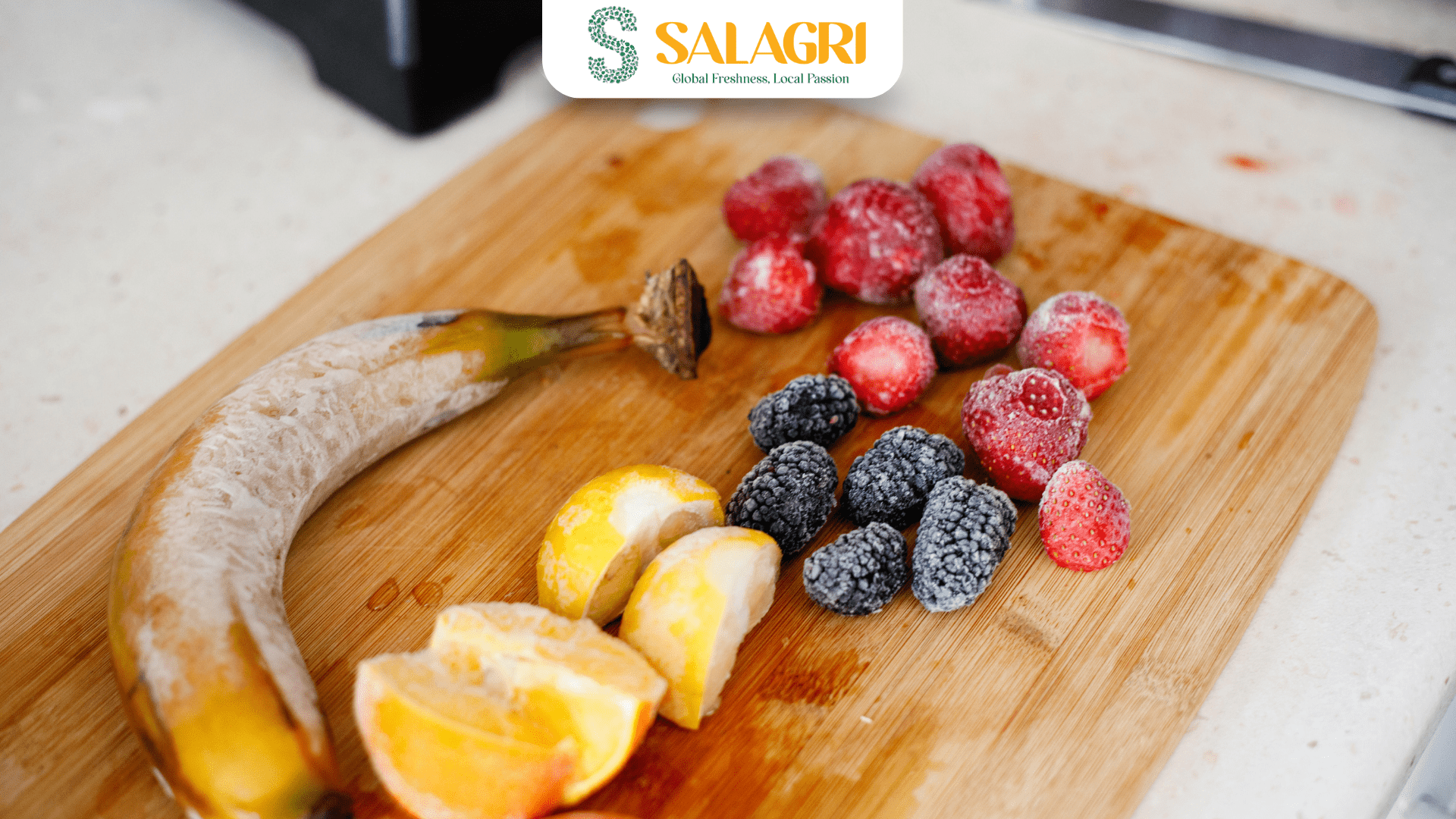

SALAGRI Fruit: The World’s Leading Frozen Tropical Fruit Provider
SALAGRI Fruit is the world’s leading provider of frozen tropical fruits and vegetables, offering mango, pineapple, avocado, dragon fruit, passion fruit, and more. Their IQF technology preserves nutrients and flavor for up to 24 months, ideal for diabetics seeking low-GI options. With eco-friendly practices and certifications, SALAGRI serves home cooks and businesses through their frozen fruits and vegetables range, focusing exclusively on tropical varieties.
Diabetic-Friendly Smoothie Recipes with SALAGRI Tropical Fruit
These low-carb, low-GI smoothies, adapted for SALAGRI’s tropical focus, keep servings under 15g carbs:
- Dragon Fruit Guava Blend
- Ingredients: ½ cup SALAGRI frozen dragon fruit (30 cal, 6.5g carbs), 1 small guava (37 cal, 8g carbs), handful of spinach (7 cal, 1g carb), ¾ cup unsweetened almond milk (30 cal, 1g carb).
- Instructions: Blend until smooth. Serves 2 (~52 cal, 7.75g carbs/serving).
- Why It Works: High fiber and low carbs stabilize blood sugar; antioxidants reduce inflammation.
- Mango Citrus Cooler
- Ingredients: ½ cup SALAGRI frozen mango (54 cal, 13g carbs), 1 small orange (62 cal, 15g carbs), ½ cup Greek yogurt (70 cal, 4g carbs), 1 cup water (0 cal).
- Instructions: Blend for a tangy treat. Serves 2 (~93 cal, 14g carbs/serving).
- Why It Works: Fiber and protein promote satiety; vitamin C boosts immunity.
- Passion Fruit Avocado Smoothie
- Ingredients: 1 SALAGRI frozen passion fruit (17 cal, 7g carbs), ¼ SALAGRI frozen avocado (80 cal, 1g carb), pinch of cinnamon, 1 cup water (0 cal).
- Instructions: Blend smooth. Serves 2 (~48 cal, 4g carbs/serving).
- Why It Works: Low-GI and healthy fats for blood sugar control and heart health.
Tips for Diabetics Using Tropical Fruit
- Portion Carefully: Stick to 15–30g carbs per serving (e.g., ½ cup mango or 1 passion fruit).
- Pair Smartly: Combine with protein (yogurt) or fat (nuts) to lower GI impact.
- Use Frozen for Ease: SALAGRI’s pre-portioned tropical fruits simplify carb counting.
- Monitor Blood Sugar: Test 1–2 hours after eating to confirm suitability.
- Avoid Juices: Use whole or frozen fruit to retain fiber.
Fresh vs. Frozen Tropical Fruit for Diabetics
|
Feature |
Fresh Fruit | Frozen Fruit |
|
Nutrients |
High, may degrade over time |
High, preserved at ripeness |
| Shelf Life | Days to weeks |
Up to 24 months |
| Carb Control | Requires measuring |
Pre-portioned, easy to manage |
|
Availability |
Seasonal |
Year-round |
| Cost | Higher out of season |
Often more affordable |
SALAGRI’s frozen tropical fruits excel for diabetic meal planning.
Conclusion: Enjoy Tropical Fruit Safely with SALAGRI
When asking “what fresh fruit is good for diabetics,” tropical low-GI options like dragon fruit, guava, and avocado stand out. Frozen alternatives from SALAGRI Fruit make it easy to enjoy Vietnam’s tropical bounty year-round. Order from their frozen fruits and vegetables for convenient, diabetic-friendly choices.
Caution: This article is for reference only; always consult your doctor or dietitian before making dietary changes to ensure they align with your medical needs.





